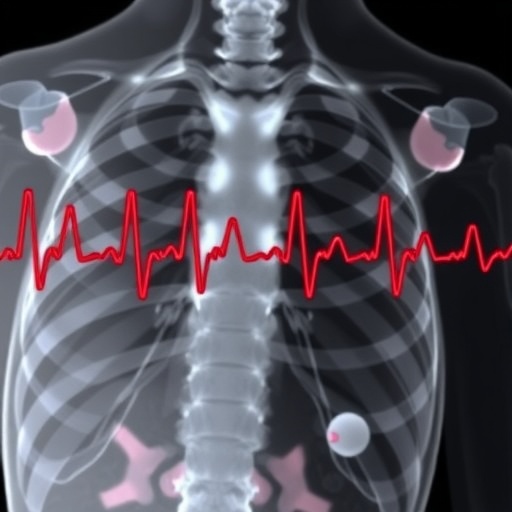Recent groundbreaking research conducted by Edith Cowan University (ECU) has shed new light on the therapeutic potential of exercise interventions for breast cancer survivors, particularly focusing on the comparative effects of resistance training and high-intensity interval training (HIIT). This pioneering study, which evaluated physiological and molecular responses over a 12-week period, documents compelling evidence that both forms of exercise induce significant elevations in myokines—muscle-derived proteins with documented anti-cancer properties—thereby demonstrating potential to impede breast cancer cell proliferation.
The study recruited breast cancer survivors who participated in a tightly controlled regimen involving either resistance training or HIIT. Blood samples were retrieved both pre- and post-exercise interventions and subsequently applied in vitro to breast cancer cell cultures to assess cancer cell growth dynamics. Intriguingly, post-exercise blood from both cohorts reduced cancer cell proliferation by approximately 22% and 25%, respectively, indicating that the biochemical milieu induced by these exercise paradigms exerts tangible inhibitory effects on tumor cell expansion.
This research builds upon the growing consensus that exercise is not merely a supplemental activity but may play an integral role within oncological rehabilitation and survivorship protocols. Dr. Francesco Bettariga, a key investigator in the study, emphasized that the lack of a major differential effect between resistance training and HIIT suggests flexibility in prescribing exercise regimens tailored to patient preference or physical capability, without compromising anti-cancer benefits. The subtle association found between HIIT-induced cancer cell growth reduction and improvements in body composition—characterized by augmented lean muscle mass and decreased adiposity—hints at complex systemic interactions mediated by exercise.
Myokines, the focus of the mechanistic inquiry in this trial, encompass a diverse class of cytokines and peptides synthesized and secreted by skeletal muscle fibers during contraction. These molecules orchestrate a range of autocrine, paracrine, and endocrine responses that modulate inflammatory pathways, immune surveillance, and metabolic regulation. Their capacity to suppress oncogenesis is mediated through several intracellular signaling cascades which inhibit cell proliferation, induce apoptosis, and limit angiogenesis, thereby exerting multifaceted tumor-suppressive effects.
The research methodology involved an observational framework whereby participants adhered to exercise protocols delineated by intensity, duration, and frequency parameters designed to optimize physiological adaptations while ensuring safety in the vulnerable post-treatment population. Measurements of myokine concentrations were performed using advanced immunoassays, while cancer cell growth kinetics were quantified employing cell culture viability assays. The carefully controlled nature of these methods provides robustness to the evidence indicating that exercise-induced myokine responses are both dose-dependent and functionally relevant.
Contextualizing these novel findings, previous literature has corroborated the safety and efficacy of exercise interventions across various cancer stages and treatment timelines. Physical activity is recognized to enhance cardiorespiratory fitness, preserve or increase muscle strength and mass, mitigate cancer-related fatigue, and alleviate psychological distress including symptoms of anxiety and depression. Moreover, exercise downregulates systemic inflammation—a critical driver of cancer progression and recurrence—and fortifies immune competence, collectively contributing to a reduced risk of secondary malignancies and mortality.
The current study’s observation that both resistance training and HIIT augment myokine levels after 12 weeks reinforces the importance of sustained engagement in exercise to elicit durable biological effects. This sustained elevation is critical given that transient fluctuations alone may be insufficient to mediate long-term cancer suppression. Thus, findings advocate for structured and consistent exercise programming as part of standard cancer survivorship care plans.
Another salient point is the differential functional benefits conferred by the two exercise modalities. Resistance training preferentially enhances skeletal muscle hypertrophy and strength, thereby improving musculoskeletal health, bone density, and metabolic profiles. In contrast, HIIT maximizes cardiorespiratory fitness and reduces fat mass more effectively, impacting cardiovascular health and body composition. These complementary physiological adaptations suggest that integrative exercise prescriptions incorporating elements of both training types may yield synergistic benefits.
Further underpinning the clinical significance of exercise, recent epidemiological data from the institution reveal that individuals exhibiting higher physical fitness metrics—manifested as stronger musculature and superior cardiovascular endurance—experience a striking 31% to 46% reduction in all-cause mortality risk. This association underscores the potential for exercise to serve not only as an adjunctive therapy but as a cornerstone of holistic cancer management, influencing long-term survival outcomes.
Nevertheless, the researchers underscore that exercise should not be misconstrued as a standalone treatment, but rather as a vital component complementing conventional medical interventions, including surgery, chemotherapy, radiotherapy, and pharmacotherapy. The nuanced integration of exercise science with oncologic care demands collaborative multidisciplinary frameworks to ensure individualized, evidence-based protocols that optimize patient safety and efficacy.
Looking ahead, the study invites further exploration into the molecular heterogeneity of myokines and their specific roles in diverse cancer subtypes and stages. Unraveling the complex interplay between exercise-induced systemic changes and tumor microenvironment modulation represents a promising frontier poised to refine precision exercise oncology.
In conclusion, the robust findings elucidated by Edith Cowan University’s recent trial decisively reinforce the therapeutic value of exercise—be it resistance training or high-intensity interval training—in reducing breast cancer cell proliferation through myokine-mediated mechanisms. This research not only advances scientific understanding of exercise’s molecular underpinnings but also offers pragmatic insights for survivorship care, highlighting exercise as a potent, accessible, and non-toxic adjunct capable of augmenting oncologic outcomes.
Subject of Research: People
Article Title: Effects of Resistance vs High Intensity Interval Training on Myokines and Cancer Cell Suppression in Breast Cancer Survivors: A Randomized Trial
News Publication Date: 3-Sep-2025
Web References:
https://journals.lww.com/acsm-msse/abstract/9900/effects_of_resistance_vs_high_intensity_interval.899.aspx
http://dx.doi.org/10.1249/MSS.0000000000003848
References: Edith Cowan University study published in Medicine & Science in Sports & Exercise
Keywords: Cancer, Breast cancer, Physical exercise, Public health
Tags: breast cancer rehabilitation programscancer survivor exercise interventionscancer survivorship and physical activityexercise as a complementary cancer treatmentexercise-induced cancer cell inhibitionhealth benefits of exercise for breast cancer survivorshigh-intensity interval training for cancer survivorsmyokines and cancer preventiononcological exercise guidelinesphysiological effects of exercise on cancerresistance training benefits for cancer patientstherapeutic exercise for cancer recovery





